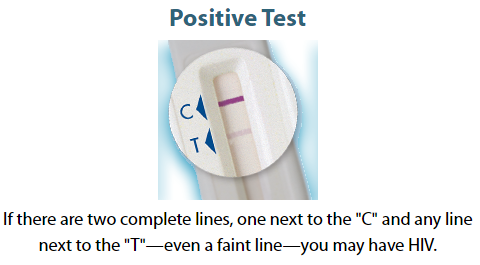- Equipment and Materials
- Equipment
- Oraquick diagnostic test kit
- Materials
- Timer
- Gloves
- Disposable bag
- Pencil
- Pre-test booklet
- Post-test booklet
- Prior to performing test:
- Prescriber shall place order in e-HR Integrated Behavioral Health Information System (IBHIS) prior to authorized personnel perform test.
- Authorized personnel shall review order in IBHIS.
- Authorized personnel shall ask client to state or provide at least (2) two unique identifiers. Unique identifiers can be any combination of the following:
• Last Name, First Name
• Date of Birth (DOB)
• IBHIS Number
• Last 4 digits of Social Security Number (SSN)
• Address
• Phone Number
- Authorized personnel shall follow universal precautions.
- Authorized personnel shall provide client with pre-test booklet.
- Authorized personnel shall explain the following procedure to the client:
- Do not eat, drink or use oral care products (such as mouthwash, toothpaste, or whitening strips) 30 minutes before starting this test.
- Always use the directions in the HIV home test kit to help read results correctly.
- Make sure a timer is used to keep time 20 to 40 minutes.
- Remove dental products such as dentures or any other products that cover their gums
- It may be helpful to have access to a phone to speak directly with a support person.
- This test detects HIV infection if used 3 months after a risk event. OraQuick tests for HIV antibodies; it takes the body up to 3 months to produce these antibodies at levels that can be detected.
- Authorized personnel shall provide client the necessary supplies, including a label with their full name and IBHIS number on the Oraquick HIV diagnostic test kit and disposable bag.
- Specimen Collection:
- Gently swab the pad along the client’s upper gums once and client’s lower gums once. Client may use either side of the flat pad.
- Test Procedure:
- Put the test directly into the test tube where indicated in the upper portion of the test kit – “Test Holder”
- Result Interpretation:
- The test window will turn pink for a few minutes. Do not read test results before 20 minutes have passed. Once results are ready, you must read between 20 and 40 minutes from the start time.
- Provide client with post-test booklet.
- Negative result:
- Only one line next to the “C” and no line next to the “T”.
- If result is negative and if it has been at least 3 months since client has had a risk event and client has followed the directions carefully, then client likely does not have HIV.
- If test result is negative and client engages in activities that put them at risk for HIV, they should test regularly.
- The most important thing to keep in mind is that HIV is preventable. Understanding how client can avoid getting HIV is important to protect them and their partner(s).
- Figure 1. Negative Test Result (one line)

- Positive result:
- Two complete lines, one next to the “C” and any line next to the “T” – even a faint line
- If result is positive, there are a couple of important things authorized personnel should do next.
- An authorized personnel must confirm the test result by performing further confirmational testing
- Share with client that:
- There are also some things that client should know about HIV that may ease some of the stress or confusion that they may be feeling.
- Remind client that are not alone.
- Medical treatments are available to help people live long, healthy lives.
- Having HIV does not mean that client have or will get AIDS.
- With new treatments, many people who are HIV-positive continue to live long and active lives. They are also able to have regular relationships with HIV-negative individuals without the risk of infecting them with the virus. Ongoing research is finding better ways to treat HIV nearly every day. The key is to identify the infection as early as possible before irreparable damage is done.
- Figure 2. Positive Result (two lines: control and test)

- Documentation:
- Authorized personnel shall document result in IBHIS as point-of-care HIV test result.
|
|
|